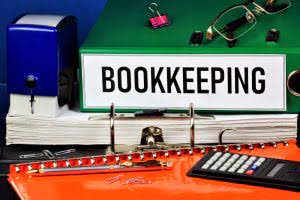A Beginners Guide to Small Business Bookkeeping
1xbet Argentina
1 de mayo de 20221xbet App Móvil Deportivas En Argentina Descargar 1xbet Apk Android
3 de mayo de 2022
Making sure your records are well-organized can save you a big headache if you’re ever subjected to an audit. Accurate, up-to-date bookkeeping is the backbone of any successful small how to bookkeeping for small business business. No matter what type of business you operate, an understanding of bookkeeping best practices is essential for keeping your business running smoothly, now and in the future.

You no longer need to worry about entering the double-entry data into two accounts. Bookkeeping is the regular practice of updating a company’s financial records to reflect all financial transactions, credits, and debits. If not done at the time of the transaction, the bookkeeper will create and send invoices for funds that need to be collected by the company. The bookkeeper enters relevant data such as date, price, quantity and sales tax (if applicable).
How to report eBay sales on taxes FAQ
Bookkeeping programs that incorporate graphs, charts, and other visual aids make it easier to increase data precision and improve communication when you’re wooing investors. If you would like to create a set of accounts for your self-employed business and you are not using an accountant or software that can provide this information, then you may find this a little difficult. The next step in learning how to keep books for small business is to decide what payment types you’ll accept and then set your business up to receive funds through those channels. When you’ve created these buckets, you’ve positioned yourself to begin dropping transactions in those buckets regularly. Most businesses use double-entry bookkeeping because it provides a second layer of verification and documentation. This gives you a second trail to follow when eyeballing discrepancies, looking for trends, and thwarting fraud.

The more information (and supporting documents) you can give your CPA at tax time, the more deductions you’ll be able to legitimately claim, and the bigger your tax return will be. With this type of service, you can communicate completely by email or phone without having to set aside time to meet in person. The responsibilities handled by a service will depend on the provider, so be sure to discuss the scope of work and compare options to find the right fit.
Are bookkeeping and accounting different?
As such submitting information that looks odd could cause you an issue. If Making Tax Digital is of no concern or you will worry about it later then you could find a range of small business bookkeeping templates online. This will drastically reduce your administration, forgetting to raise an invoice and the potential of bad debts when customers do not pay. That happens a lot not to mention the time energy and effort you waste in chasing that money. This is particularly relevant when you start keeping books for a small business (or not, as the case might be).
To find the best bank account for your business, look for more benefits than just low fees (as tempting as that may be, because who likes fees?). Find an account that gives you relevant, immediately applicable perks that map straight to your goals. For example, monthly minimum fees may be best for businesses with high volumes of transactions but not those in a retainer-based business with few clients. First, you’ll have to expand your definition of the word “accounts.” In bookkeeping, accounts are categories like income, expenses, assets, liabilities, or equity. In this article, we’ll continue to use the term accounts for simplicity. Start by implementing these 13 bookkeeping and accounting fundamentals.
Start using Xero for free
Your schedule begins with your starting account balances and ends when you close your books. The last thing you want to do is put off recording transactions in your books. Letting transactions pile up can lead to disorganized records, mistakes, and a whole lot of unnecessary stress. Plus, good records provide a paper trail (or digital trail) for every transaction, which can be invaluable if you need to look back at an expense or payment.
We’re going to cover the accounting basics for small businesses, as well as the best small business accounting software to help you with the process. Individuals who are successful bookkeeping professionals are highly organized, can balance ledgers accurately, have an eye for detail and are excellent communicators. Once the entries are assigned to the correct accounts, you can post them to the general ledger to get a bird’s-eye view of your current cash status. Most accounting software does this for you, so you don’t need to worry about an extra step. The specific answer to this question can vary somewhat depending on the extent of bookkeeping services your company needs, and how often you require the services of a small business bookkeeper.
Best Free Accounting Software for Small Businesses
To use double-entry bookkeeping, simply plan to handle every transaction twice—one in an expected way and another in a corresponding equal-and-opposite way. When you’re learning how to keep books for small business, income is your top priority (naturally). Meaning, to monitor income long term, you need to watch your receivables closely. If you make a profit by selling on eBay or if you sell items on eBay as a business, you need to include that income on your tax return, regardless of the amount. If your sales on eBay total more than $20,000, eBay will report the total of those sales to you and to the IRS on Form 1099-K.
- If your business chooses to keep this task in-house, it’s best to stick to a predictable expense tracking schedule.
- The responsibilities handled by a service will depend on the provider, so be sure to discuss the scope of work and compare options to find the right fit.
- If you’re too busy to do the bookkeeping for your small business, then you can find someone to do it for you.
- Small business owners often deal with fear and imposter syndrome but «Feel the Fear and Do it Anyway» helped Alford move forward nonetheless.
- And the only way to know that for sure is to have accurate, up-to-date books.
